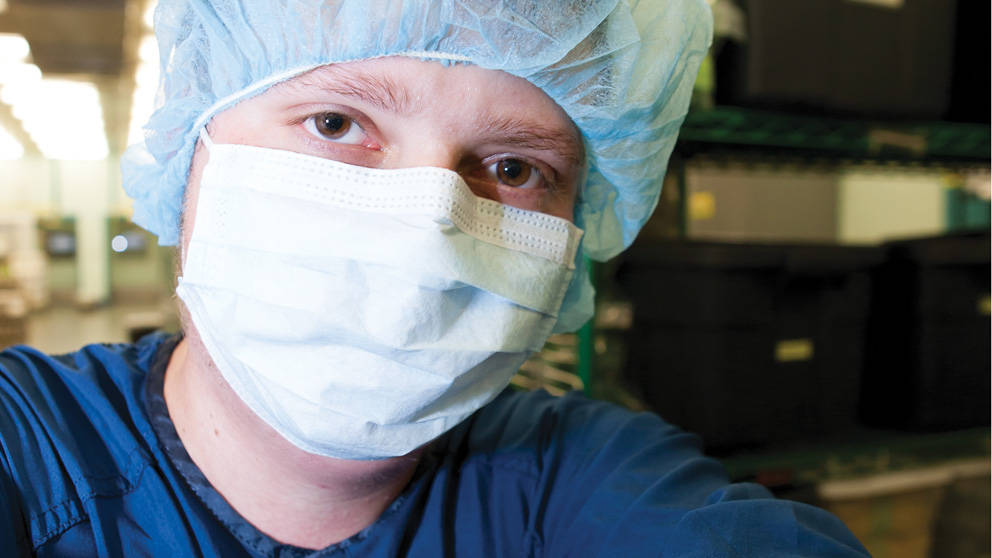
Q: How did you first come to work at JAX?
A: A few years ago I was doing restaurant work in Bucksport, Maine, and a friend was working here, so I put in some applications. It took a while—about eight months—but I finally got a phone call for an interview, for a machine operating technician job. I’ve been working here happily since.
Q: Bucksport? Do you still live there?
A: Yes. I’ve lived in Bucksport for 17 years and graduated from Bucksport High School. It’s a pretty long commute though, about 50 miles each way.
Q: Would you have stayed in restaurant work if you hadn’t come to the Laboratory?
A: No, I’d wanted to go into local law enforcement growing up. I guess I’m a typical Mainer—I like to spend time outdoors and hunt and fish, so I definitely wanted to stay in Maine and that seemed like a good field for me. But the Lab presented a striking opportunity, and I’m glad I came here.
Q: Are you still a machine operating technician?
A: No, I’m now in charge of ordering and receiving everything my team needs for our work and the animal rooms we serve, including the maximum barrier rooms. Anything that goes into those rooms, where the mice are immunosuppressed and can’t fight infection, has to be sterile. It’s very busy—in the month of January alone my team processed and decontaminated more than 250,000 animal cages and 500,000 bottles of water, and that’s just a part of what we do.
Q: You have been working on larger issues for JAX as well, right?
A: I was part of a preliminary meeting with people from across the Laboratory about our core values. It was a great experience, and it gave me a sense of the high quality of people working here. I took it as a strong indication our commitment to going global—we need to establish global values across the organization, not just function as a local institution.
Bonus question
Q: How do you sterilize everything that goes into the maximum barrier rooms?
A: Well, there’s the autoclave, which sterilizes with steam. Every load has a biological indicator for quality control—you incubate a sample for 24 hours, and if nothing grows, it’s good to go into the room. So far everything that I’ve seen has been clean. For things that can’t take high heat steam, such as a lot of plastics, you can treat them with ethylene oxide gas or saturate them in ethanol. It’s like prepping for an operating room—you really have to make sure things are sterile.